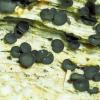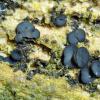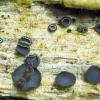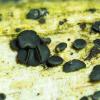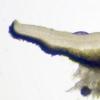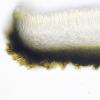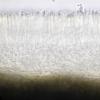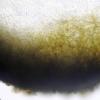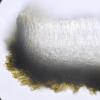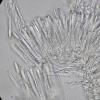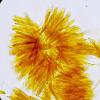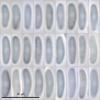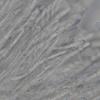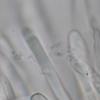
21-12-2025 09:32
Hello.A tiny ascomycete found embedded in wood in

22-12-2025 00:47
Patrice TANCHAUDBonsoir, rÃĐcolte à proximitÃĐ du milieu dunaire

21-12-2025 21:32
Pol DebaenstHello, Garden, Burgweg 19, Veurne, BelgiumOn 10/1

21-12-2025 21:40
Isabelle CharissouBonjour, j'aimerais connaitre les rÃĐfÃĐrences de

21-12-2025 21:31
Pol DebaenstHello, Garden, Burgweg 19, Veurne, BelgiumOn 10/1

21-12-2025 21:31
Pol DebaenstHello, Garden, Burgweg 19, Veurne, BelgiumOn 10/1

20-12-2025 23:08
Patrice TANCHAUDBonsoir, rÃĐcolte sur sol sablonneux dans l'arriÃ

20-12-2025 15:47
Mirek GrycHi.These grew on pine wood that was heavily covere
 Good afternoon
Good afternoonThis pretty black Mollisia was growing on wet Tamarix wood, in fact at the magnifying glass I did not think at any time that it was a Mollisia. They are small cups of 1.5 2 mm in diameter.
The ectal excipulum has textura subglobulosa, becoming more prismatic towards the margin, where the terminal cells are cylindrical-claviform and very dark brown. The medullary excipulum has textura intricata. The asci are cylindrical, octosporic, biseriate, with croziers and IKI-. Paraphyses are cylindrical with a large VB occupying the entire terminal cell, with negative reaction to KOH. Ascospores are cylindrical-allantoid, without LBs, (6) 7 - 8 (8.3) Ã (1.6) 1.9 - 2.2 (2.4) Âĩm; Q = (2.8) 3.3 - 4.1 (5); N = 56; Me = 7.4 Ã 2.1 Âĩm ; Qe = 3.7,
With the keys I can't come up with anything coherent.
Thanks for your help.






